*This article is reproduced from the autocarweekly public account.
Author: HooKnows
In the 20th century, the most significant impact event on Earth was the Tunguska blast in 1908. In the 21st century, I will cast my vote for the collision between Polestar and BYD.
First, the Polestar Alpha S collided with the BYD Han, then BYD officials angrily clashed with “don’t-know-much-about-cars” car experts, and finally a slap in the face from netizens shattered BYD’s announcement. It can be said to be a triple collision, with collisions on top of collisions, collisions leading to blossoming, and collisions within collisions. Second-level collision car athletes applauded in their wheelchairs and shouted with delight.
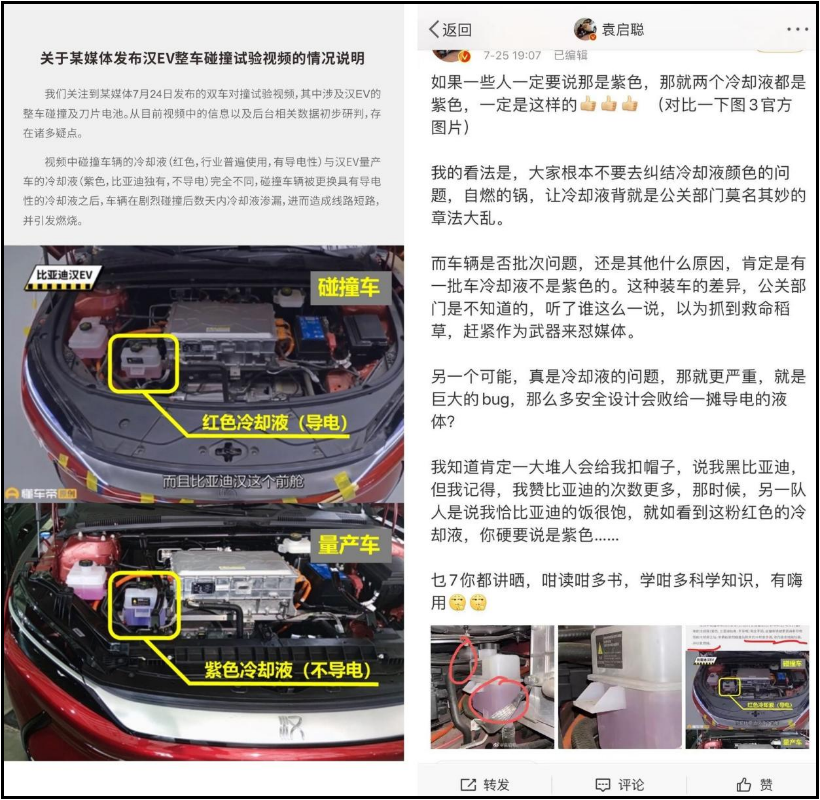
In the era of fossil fuel vehicles, the most eye-catching event, regardless of whether one is a car fan, is undoubtedly the crash test accident. In the era of electric vehicles, the trend of battery fires has replaced crashes. Do you remember the saliva exchange between BYD and Ningde Era due to the needle-puncture test last year? This time, it is not only a crash test, but also a collision between two different brands. And after the collision test, one of the two electric cars even caught fire!
It’s not embarrassing to catch fire two days later
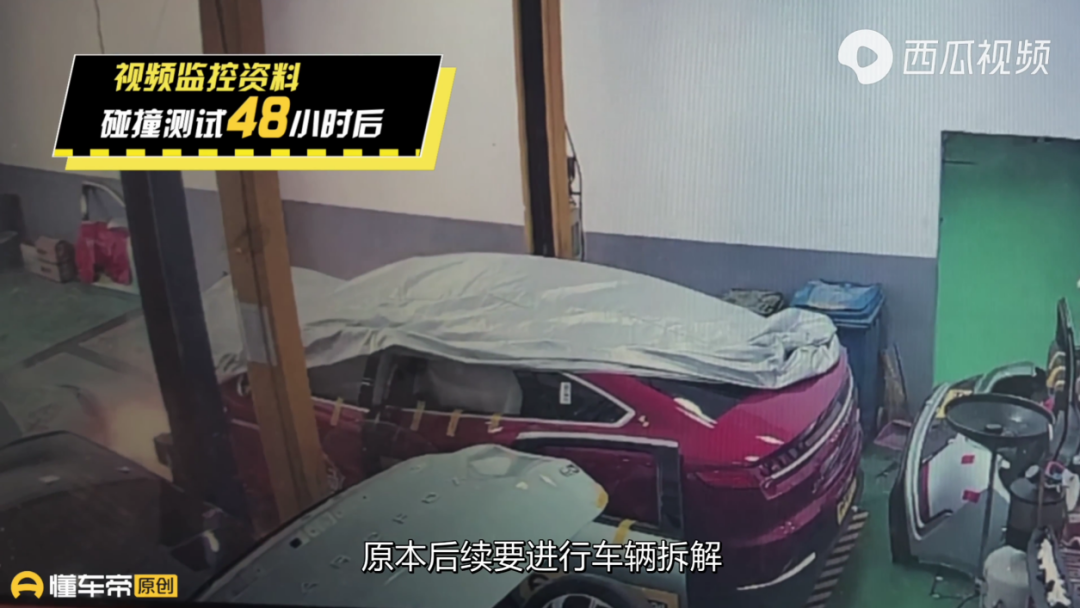
Although the most fascinating thing this time was the fact that the battery pack of the BYD Han EV caught fire after being idle for two days, the safety of the battery is not the most embarrassing part of this incident for BYD-even though in reality, the battery fire (rather than something else) has caused the most public backlash.
Because after two days of collision, the fact that it caught fire suggests relatively successful thermal diffusion control-which car owner would bravely wait for two days before taking the car to the repair shop after such a collision? Even if we have to focus on the fire, the emphasis should be on reflecting on the previous misreading of the publicity, that “blade batteries will not catch fire,” rather than directly linking “violent crash followed by two-day fire” to passenger safety.

After the two cars collided, neither of them experienced thermal runaway within the sufficient escape time provided and thermal diffusion management can be considered successful. Of course, you can compare horizontally other models that “have not caught fire for longer” under similar encounters, but in terms of the specific performance of BYD Han EV this time, it is neither naturally excellent nor needs excessive criticism.The fire of two days later cannot burn the you of two days before. None of the design purposes of any power battery pack are to ensure that there will be no thermal runaway phenomena such as fire and explosion after a severe collision, sufficient escape time or even sufficient transportation time. Battery thermal diffusion control is for the protection of passenger safety, not for protecting the scrap vehicle body. And please note that there is no theory that can support the idea that because there is a difference in the thermal runaway performance of the two cars after this collision, it can be concluded that if the collision is more severe, BYD will be more likely to catch fire faster than Arcfox, and the latter will still perform better than the former (no fire or later than BYD). For electric vehicles, the severity of the collision and the speed of thermal runaway are not linearly related.
So the results of this collision also cannot prove that if a more severe collision occurs, BYD will definitely be more likely to endanger passenger safety than Arcfox. The actual collision results this time only reflect the thermal runaway situation of the two parties under the same severity of the collision, and only reflect these but also only these, which cannot prove anything else. There is no need to extrapolate from this.
It seems that dcdapp did not find a notarization, and BYD also did not obtain any conclusive evidence. While sitting on the sidelines and enjoying the show, you also need to seriously understand what factors affect the collision safety of a vehicle-especially your own vehicle. Folklore often says “whether the structure is solid” and “whether the car can withstand a collision.” What factors make them different?
Ultra-high strength goes without saying: the body is the most important component to resist collision. In dcdapp’s crash test, compared with the Arcfox Alpha S on the opposite side, BYD Han’s body was significantly more damaged. After the collision, not only the A-pillar and threshold of one side of Han were visibly deformed, but it also affected the smoothness of opening the front door (affecting escape). Even a slight deformation appeared above the right rear door on the opposite side of the collision. Although the 50% offset collision at 64 km/h (relative speed of 128 km/h) against the Arcfox is indeed much stricter than the conventional C-NCAP and China Insurance Research Institute test items, it is better to be safe than sorry. Who said that the Arcfox did not experience such conditions.Previously, we have mentioned that the “strength” and “stiffness” are two completely different indicators that determine the collision performance of a car body. Stiffness represents the resistance to recoverable deformation, such as the minor deformation of the car body when carrying heavy loads over bumps which can be restored when external forces disappear. Strength, on the other hand, represents the ability to resist irreversible deformation, such as steel deformation that cannot be restored after a car is crushed (see “99% of People Don’t Know That ‘Stiffness’ and ‘Strength’ Are Two Different Things”).
Don’t confuse the two. This is fundamental knowledge for evaluating car bodies.
Now let’s talk about strength. You must have heard of or seen these terms: high-strength steel, ultra-high-strength steel, hot-formed steel, MPa, yield strength, and tensile strength. When car manufacturers display white body material charts, they show you a bunch of “High,” “Very High,” “Ultra High,” and so on, and you don’t know where high ends.
There are various types of steel materials used in manufacturing car bodies, and different processing methods determine different atomic arrangements, which in turn determine the characteristics of the steel, including strength. Mild steel, the most common type of steel, generally has a tensile strength of less than 300 MPa, while ultra-high-strength steel processed through hot forming can reach or even exceed 2000 MPa. Tensile strength, also known as the ultimate strength, is significantly higher than the yield strength for steel.
Strength has numbers and units, and at first glance, it seems that the strength of a car body can be directly judged by these values. For instance, can we say that car model B is stronger than car model A because it uses 1700 MPa steel, while car model A uses 1500 MPa steel? Or, because A uses 1500 MPa and B also uses 1500 MPa, are the strengths and safety of the two equivalent?
This is a known trick used by many car manufacturers: even if it’s a fallacy, if it’s easy to understand, it’s easy to spread; even if the truth is spoken, once it gets complicated, people forget it easily.
In simple terms: material strength is not equal to structural strength.
The term “MPa”, when referring to materials, always indicates the strength of the material, not the component or vehicle as a whole – the latter cannot be quantified. Material strength is just one factor that determines structural strength. Even with a steel strength of 1500 MPa, the strength of a flat steel plate and a bent steel tube, or of parts with 1 mm thickness compared to 2 mm thickness, or of welded joints compared to shaped joints, would vary. Therefore, even if an automaker claims to use “99999MPa” steel, it can only be considered a gesture of good faith, and it does not ensure safety.
When an automaker says it uses high-strength steel of 20%, 30%, or 40%, it only indicates that they have made an effort to reduce weight and cost, but it does not fully demonstrate that the car is safer.
Additionally, “yield strength” is not the opposite of “tensile strength. In this context, the term “yield” describes the process of stress changes in a steel material, which is not the opposite of “tensile”. Yield strength is one of the processes in which the steel material reaches its stress limit, and it is smaller than tensile strength.
The difference in collision safety can be significant with simple structural changes, in comparison to the strength of steel as measured in MPa. There is a classic example where a U.S. version of a car added a layer of hot-stamped steel liner to the inside of the A-pillar, which increased its strength by 1.2 times without any noticeable changes to the appearance. When tested in a collision, the Chinese version of the car received surprisingly low scores, causing a sensation.
Components like A-pillars and B-pillars could have a significant difference in strength depending on whether they are hollow or have inner liners and tubes, and the difference cannot be seen from the outside. Manufacturers can still use slogans like “A-pillar/B-pillar made of 1500 MPa ultra-high-strength steel” without violating any regulations, even if an extra effort was made through the use of liners or inner tubes. For example, Ford likes to place hydraulic-formed steel pipes inside the body parts, which typically only have a strength of 1000 MPa (not very high), but it can greatly increase the strength of the entire component.
In conclusion, material strength does not determine the structural strength of a vehicle, and for collision safety, automakers prefer to make changes to internal parts, adding liners or inner tubes.
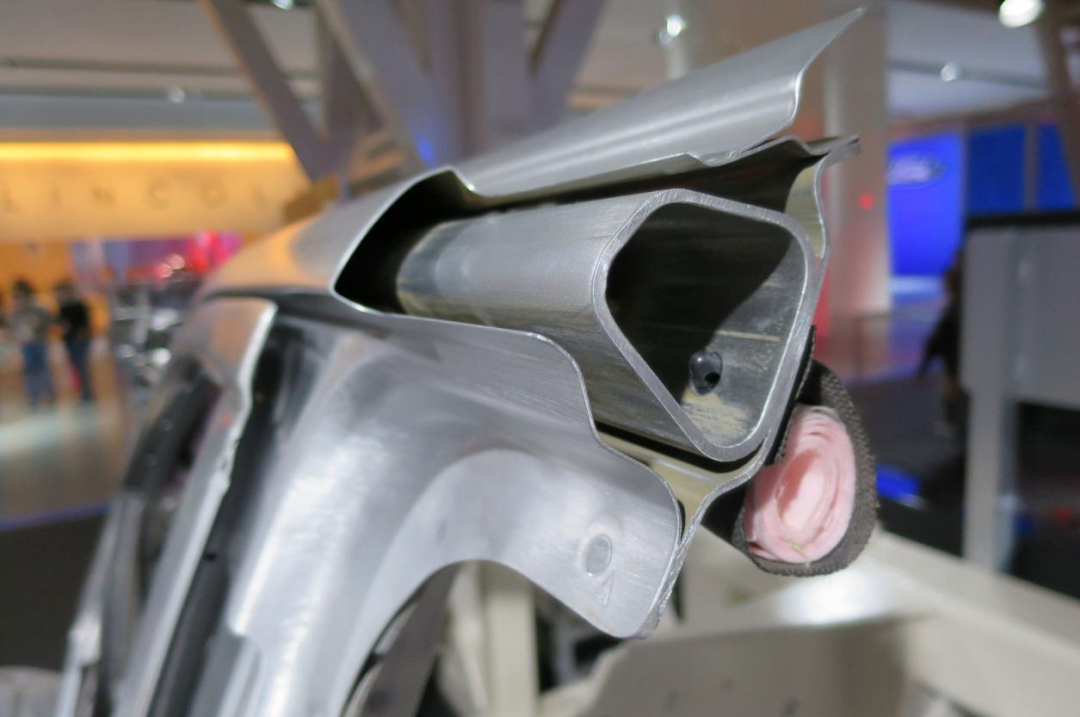
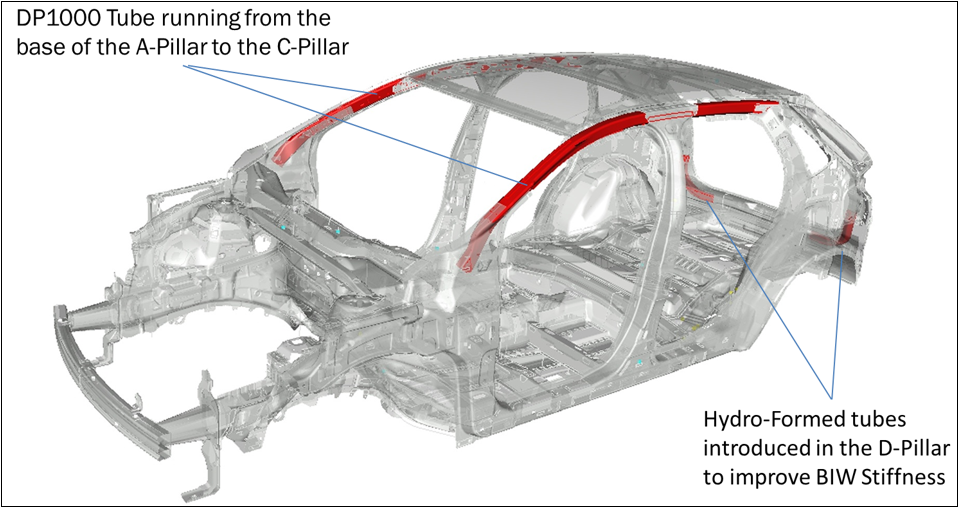
Structure: Smart and Cunning
Now you know that a certain amount of MPa does not equal structural strength and that good structural strength does not depend on high-strength materials. So, let’s take it a step further, is it really necessary to rely on high-strength body to achieve good results in crash tests?
Many people know that when IIHS first proposed the 25% small overlap crash test, many luxury car manufacturers failed miserably and had to go back to the drawing board. Later, C-NCAP also adopted the 25% overlap test, making it one of the most rigorous and credible crash testing organizations in China. So, what kind of magical technology did global automotive giants come up with to tackle the world’s most severe automotive crash safety tests?
Answer: a small piece of steel bar protruding out, an additional energy-absorbing box, or an inconspicuous ramp.
Volvo designed a sloping surface extending outward behind the front wheels of its new generation vehicles. In the event of a 25% small overlap crash, the front wheels would not be pushed backward toward the passenger compartment, endangering the driver’s foot space. Instead, the wheels would slide outwards along the slope, giving the front wheels a step to go down. So if you watch the 25% crash test videos of Volvo’s new vehicles, you’ll notice that the front wheels detach quickly from the body after impact. This is called “giving the front wheels a step down.”
There are also some less prestigious solutions. In 2016, IIHS found that some manufacturers, including Toyota, added extra reinforcement structures on the driver’s side of the anti-collision beam to pass the 25% overlap crash test, thereby increasing the effectiveness of the beam’s energy absorption by having the collision first make contact with this additional structure within the 25% width range on the driver’s side.
The less prestigious aspect is that IIHS only tested the driver’s side 25% offset, leaving the passenger side empty.
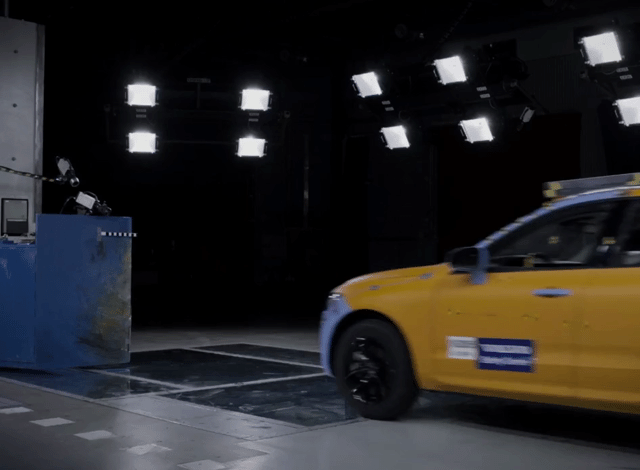
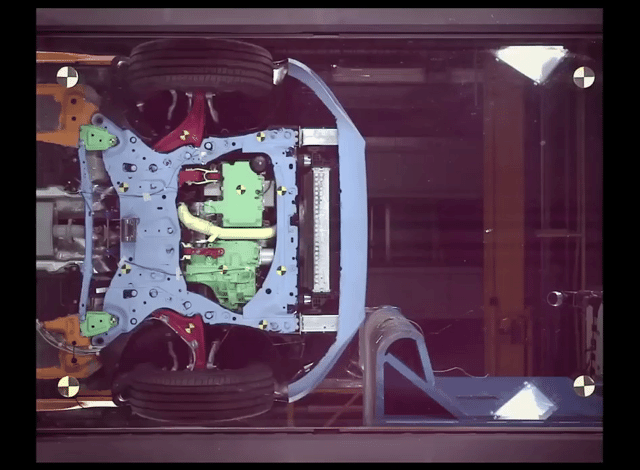
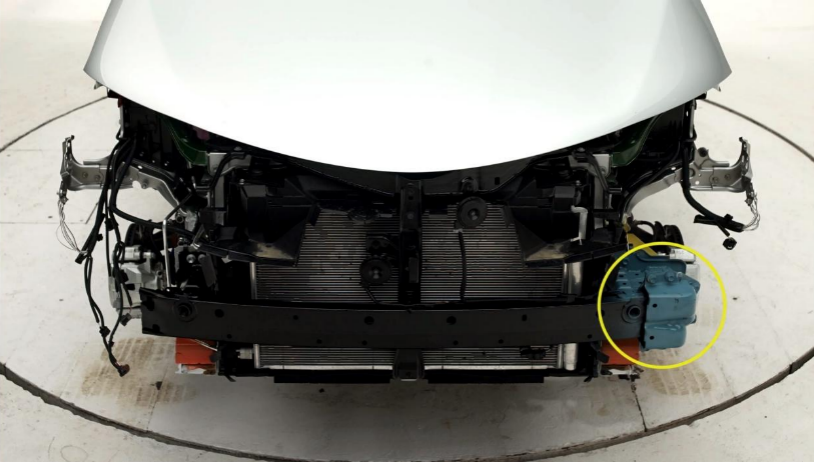 The reason why IIHS made this discovery is that they had a sudden inspiration to test the 25% offset crash on several models of cars. These models performed well on the driver’s side in a normal state, but the results were all terrible on the passenger side. IIHS was puzzled and had to take apart the cars to look at them. “Hey, are you clever guys playing with me?” Thus, starting in 2018, the 25% offset collision on the passenger side also became a required course, and no one could escape it.
The reason why IIHS made this discovery is that they had a sudden inspiration to test the 25% offset crash on several models of cars. These models performed well on the driver’s side in a normal state, but the results were all terrible on the passenger side. IIHS was puzzled and had to take apart the cars to look at them. “Hey, are you clever guys playing with me?” Thus, starting in 2018, the 25% offset collision on the passenger side also became a required course, and no one could escape it.
As we all know, North American people love pick-up trucks, and IIHS is no exception. In 2015, they found that different versions of the Ford F-150 driver’s cab (many pick-up trucks have multiple driver’s cab versions such as one row seat, two row seats, extended or etc.) have different collision reinforcement structures, so they began to test every type of driver’s cab version of pick-up truck.
In order to pass the test, Ford started adding a “stick” to the front and rear of the beam (the non-load-bearing frame of the car) of all F-150 pick-up trucks since 2017. The front one is used to reduce collision energy, and the rear one is used to suppress the compression of the front wheel against the car cabin. With these four sticks, the 25% collision went from hell to heaven.
These ingenious or not-so-clever structures for dealing with 25% small-area collisions are just the tip of the iceberg when it comes to structural examples.
If you’ve read through the entire article, you may realize a very pessimistic fact: objectively speaking, we really have no way to quantify the passive safety of a car.
Speaking of the body, we can look at the torsional stiffness number to see the torsional stiffness, and we can look at the net weight calculation lightweight coefficient to see the lightweight performance, except for the collision strength where you can’t get a specific comparable number. Material strength? We’ve mentioned that how many megapascals are just material strength, and material strength is not equal to component strength, let alone the fact that the safety impact is on the entire car rather than a particular component. Look at the internal structure? Look at stress analysis? That’s not something ordinary people can do, and even professionals may not be able to judge it by eye.
Those measurable indicators also have uncertain factors such as automakers falsifying data; however, there is not even a measurable or falsifiable indicator for vehicle safety. This is probably the fundamental reason why collision testing organizations such as Euro-NCAP and IIHS have rapidly emerged in the past few decades, and consumers have no way to quantify or compare the passive safety of cars—probably except for the experience gained from actual accidents, and this experience is also unreliable and non-standard.The evaluation of automotive collision safety ultimately requires a truly objective and independent third-party organization. Regardless of the media or car companies involved in this industry, the impact on public opinion is bound to be greater than the supply of truth.
This article is a translation by ChatGPT of a Chinese report from 42HOW. If you have any questions about it, please email bd@42how.com.